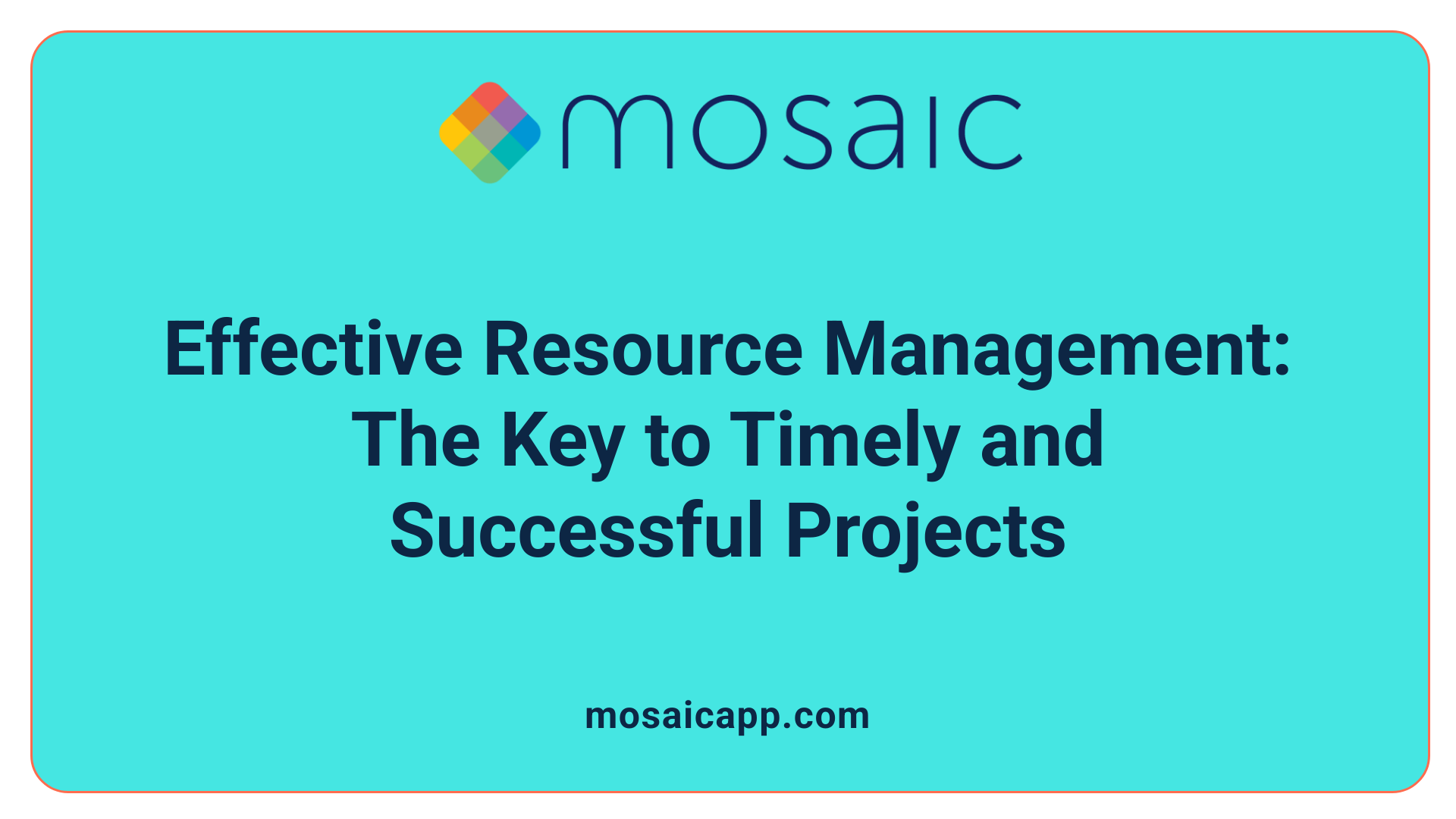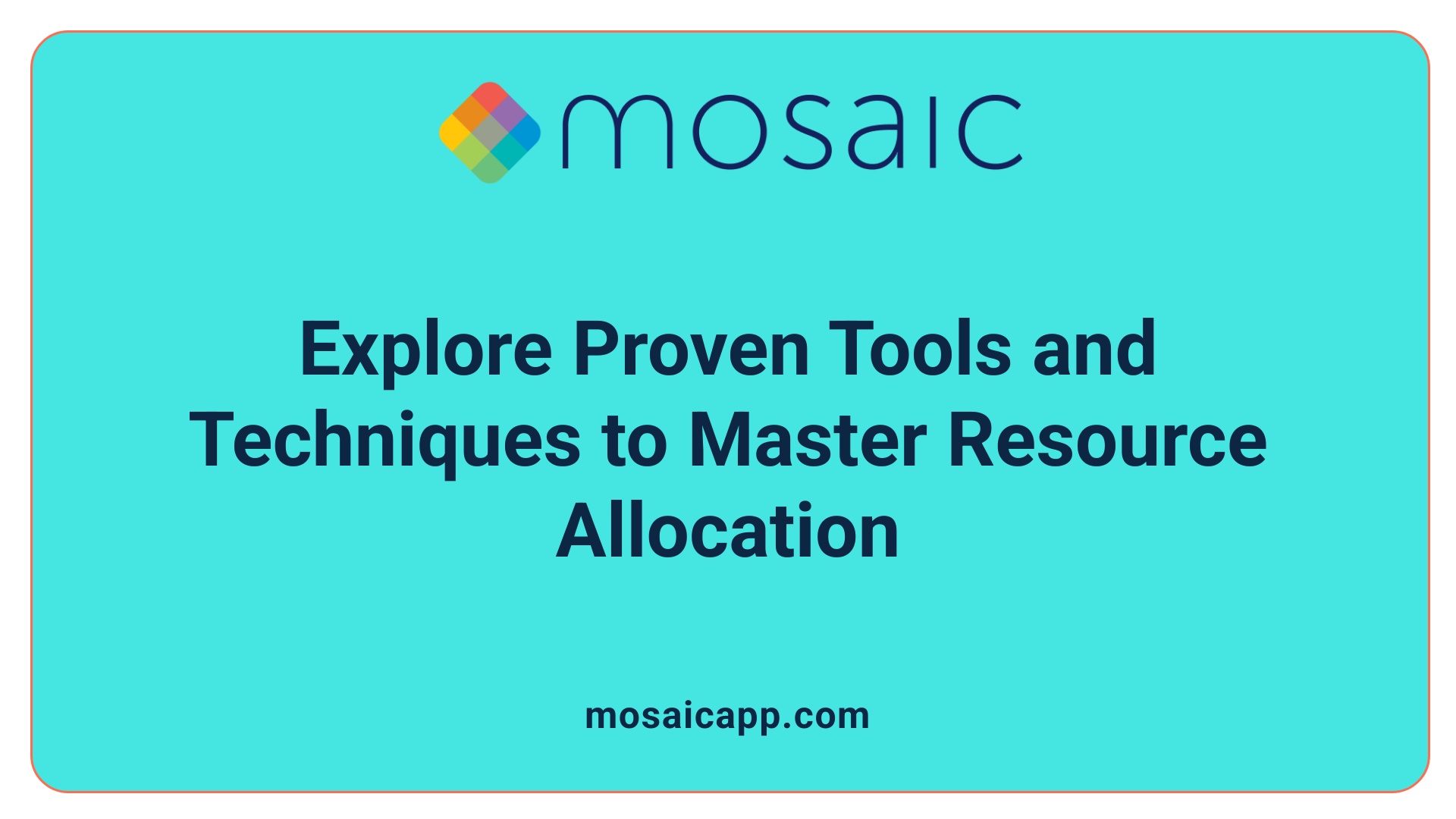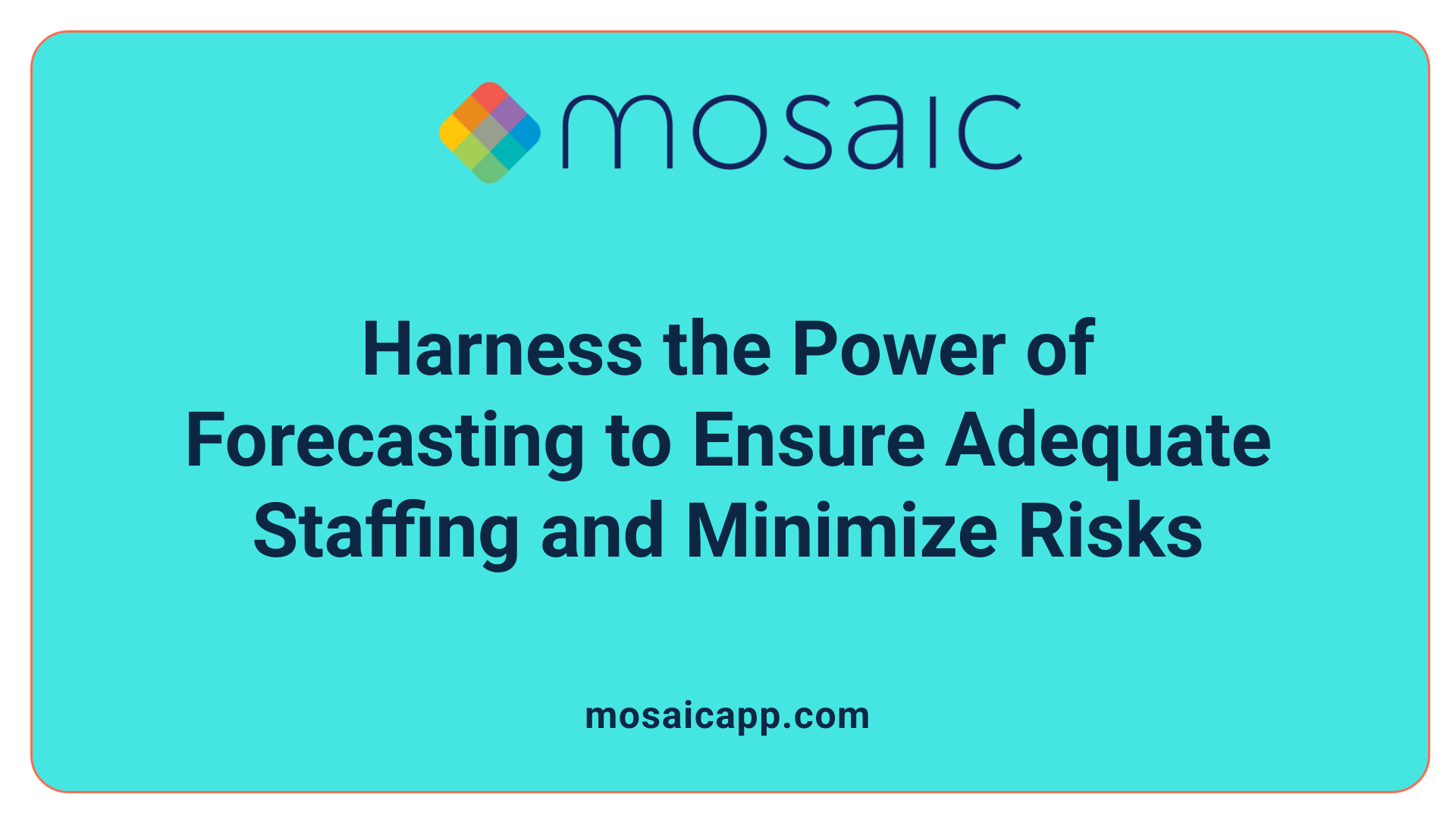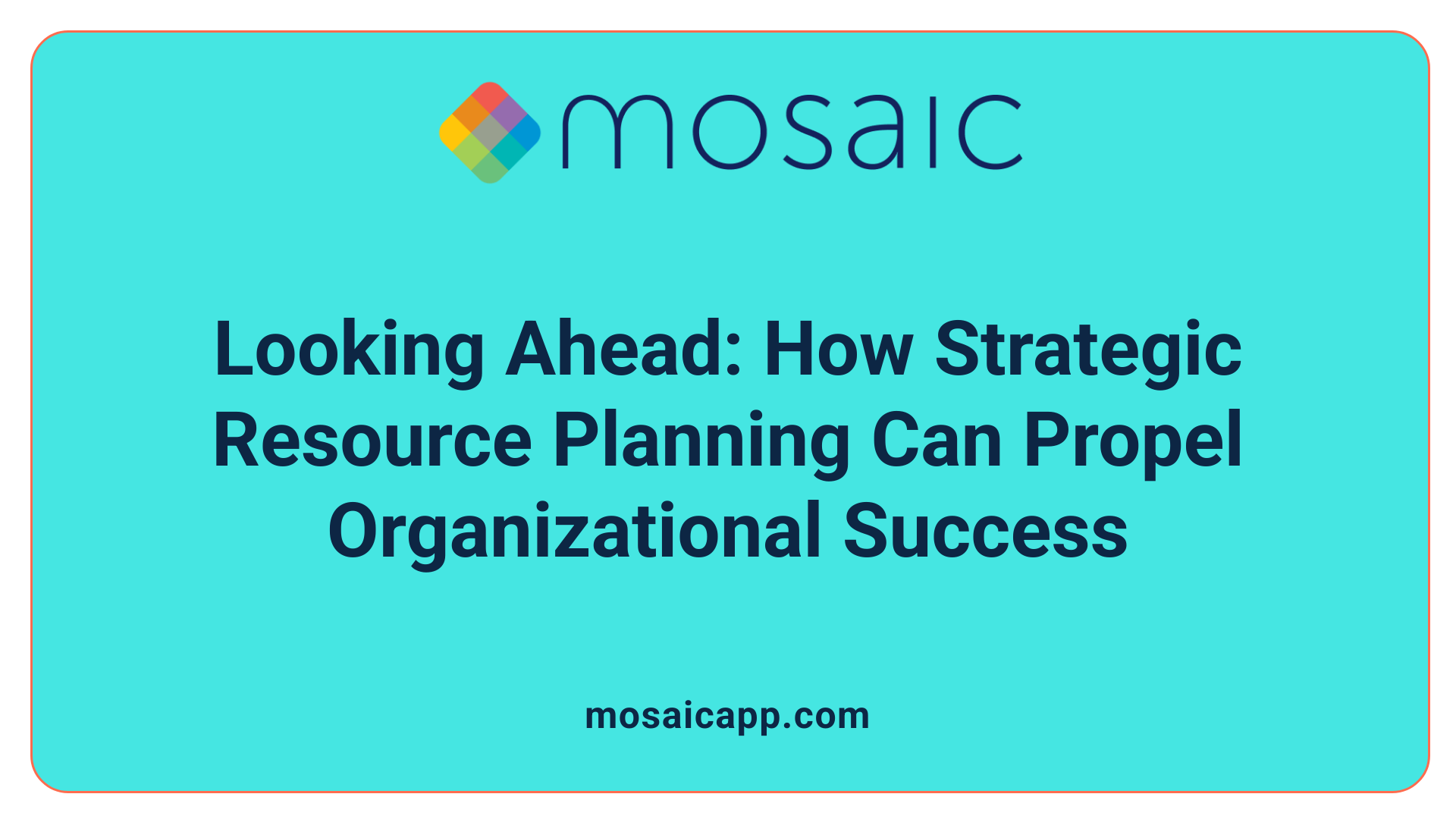Navigating the Shift from Ad-Hoc to Predictive Resource Planning
As project landscapes grow increasingly complex, organizations can no longer rely on reactive, last-minute staffing decisions to meet project demands. The move towards predictive resource planning represents a critical evolution in project and resource management—enabling proactive forecasting, optimized utilization, and strategic alignment with business goals. This article explores how effective resource forecasting and planning can transcend ad-hoc staffing challenges to drive project success in dynamic environments.
Fundamentals of Resource Management in Project Planning
What are the key components of resource management in project planning?
Resource management in project planning involves identifying, estimating, acquiring, and allocating resources such as personnel, equipment, materials, and budget to meet project objectives. A resource management plan is essential; it outlines resource requirements, scheduling details, costs, and supplier information to guide the project lifecycle.
Resource Estimation and Acquisition
Estimating resource needs accurately is fundamental to avoid shortages or excesses. It includes forecasting demand based on project scope and timelines. After estimation, acquiring the right resources—whether in-house personnel or outsourced experts—ensures readiness and supports project execution without delays.
Resource Scheduling and Monitoring
Allocating resources optimally over the project timeline prevents bottlenecks. Continuous monitoring through real-time tracking helps detect underutilization or overutilization early. This proactive approach enables adjustments to keep projects on track and resources balanced.
Strategic Utilization and Adaptation
Resource management isn't static; it requires adapting to organizational complexity, technology trends, and emerging client needs. Strategic utilization involves aligning resource capabilities with project demands, managing ramp-up/ramp-down phases, and balancing workloads to maximize productivity and personnel satisfaction.
Role of Resource Management Software
Modern resource management software enhances forecasting accuracy and operational control. Tools like Tempus Resource provide real-time utilization insights, skill tracking, and scenario planning, integrating seamlessly with platforms such as Workday and Oracle. This software empowers organizations to improve visibility, streamline resource allocation, and respond dynamically to changing project landscapes.
Why Effective Resource Management Determines Project Success

How does effective resource management impact project success?
Effective resource management significantly influences project outcomes by ensuring that all resources—such as personnel, equipment, and budget—are efficiently allocated and utilized. This reduces the risk of delays and cost overruns, which are common pitfalls that can derail project timelines and profitability.
Avoiding delays and cost overruns
Accurate resource forecasting allows organizations to plan for upcoming projects adequately, managing demand and supply to minimize last-minute hires or resource shortages. This proactive approach helps prevent unexpected delays and extra costs associated with scrambling for resources or reassigning staff.
Boosting productivity and predictability
By tracking resource availability and project requirements, organizations improve utilization rates and productivity. This leads to better predictability in meeting deadlines and project deliverables, as teams clearly understand their workloads and capabilities.
Importance of communication and training
Effective resource management involves ongoing communication and participative planning among managers and project teams. This collaboration ensures that resource allocation is based on up-to-date information, team strengths, and development needs, fostering a balanced and motivated workforce.
Using audits and tools for optimization
Regular audits and the adoption of resource management tools, such as Tempus Resource, help organizations maintain real-time visibility into resource capacity and performance. These tools facilitate scenario planning and highlight potential bottlenecks, enabling timely adjustments to resource plans and improving overall project alignment and success.
Challenges and Obstacles in Project Resource Management
What are common challenges faced in project resource management?
Project resource management often grapples with several significant challenges that can impede project success. One major issue is resource overallocation, which frequently leads to employee burnout and reduced productivity. When team members are stretched too thin, their performance and job satisfaction may suffer, ultimately impacting project outcomes.
Another prevalent obstacle is the lack of visibility into resource availability and skill gaps. Without clear insights into who is available and what competencies exist within the team, assigning the right people to the right tasks becomes inefficient and may cause delays.
Conflicting priorities and shifting project scopes further complicate resource management. These changes demand agility in reallocating resources quickly to meet evolving demands, which requires flexible planning processes and responsive communication channels.
Inadequate forecasting and poor planning also contribute to resource shortages or surpluses. When organizations cannot accurately predict future resource needs, they risk project delays, cost overruns, and missed opportunities due to underutilized or absent resources.
Communication barriers and resistance to adopting appropriate management tools hinder collaboration and resource tracking. Without centralized platforms or integrated systems, coordinating efforts across multiple projects and stakeholders becomes fragmented and error-prone.
Addressing these challenges involves establishing centralized resource management solutions with real-time data analytics. By improving the visibility of resource capacity and skills, organizations can enable more accurate forecasting, balanced workload distribution, and proactive hiring or training. Additionally, involving management and project leads in participative planning and developing risk management strategies helps organizations adapt to dynamic project environments while maintaining resource efficiency.
| Challenge | Impact | Solution Approach |
|---|---|---|
| Resource Overallocation | Burnout, decreased productivity | Balanced workload allocation, monitoring tools |
| Lack of Visibility | Inefficient resource assignments | Centralized systems with skill and availability tracking |
| Conflicting Priorities | Misaligned resources, delays | Flexible planning, active communication |
| Poor Forecasting | Resource shortages/surplus, budget issues | Accurate forecasting models, scenario planning |
| Communication Barriers | Coordination issues, tool resistance | Integrated platforms, training on tools |
Common Tools and Techniques for Effective Resource Management

Which tools or techniques are commonly used for resource management in projects?
Resource management in projects relies on various tools and techniques designed to optimize resource allocation and ensure projects meet deadlines efficiently. Among the most widely used tools are resource allocation charts and Gantt charts. These help visualize who is assigned to which task and track progress over time, making resource bottlenecks and availability clear.
Kanban boards complement these charts by providing a visual workflow management system that allows teams to monitor task status and resource workload in real time. Popular project management software such as MS Project, Asana, and Monday.com integrate these visuals and streamline communication across teams.
Techniques like resource leveling and smoothing are essential for handling resource constraints. Resource leveling adjusts schedules and tasks to prevent over-allocation, while smoothing balances workloads without affecting project timelines.
Capacity planning and skill mapping further enhance resource forecasting by helping project managers understand the current skill sets available and predict future resource needs based on demand trends. These approaches prepare organizations to manage fluctuations in project requirements and avoid last-minute shortages or excesses.
Modern resource management also benefits from AI, automation, and real-time insights. Advanced software like Float, Resource Guru, Scoro, and Saviom provide live schedules, capacity management, and scenario planning. These tools incorporate AI-driven automation that improves forecast accuracy and offers proactive recommendations to optimize resource utilization.
By combining traditional tools with emerging technologies, organizations can achieve a balanced, efficient resource plan that adapts to dynamic project environments and improves overall productivity and profitability.
Planning Resources for Complex Projects: Strategies and Best Practices
How can project managers plan resources effectively for complex projects?
Effective resource planning for complex projects begins with a comprehensive assessment of all available assets. This includes evaluating personnel skills and availability, equipment, budget constraints, and historical data from similar past projects. Utilizing project management tools such as resource breakdown structures and Gantt charts can organize this information for better visualization and scheduling.
Prioritizing tasks and projects is essential. Project managers should focus on strategic objectives and deadlines, forecasting resource demands and assessing capacity to prevent resource overuse or underutilization. This capacity versus demand analysis helps balance workloads and prepare for pipeline projects, reducing the risks of delays or excessive costs.
Flexible scheduling paired with real-time oversight allows project teams to adjust plans proactively. Employing resource management platforms that provide scenario planning, utilization tracking, and integration with existing tools can facilitate these efforts. This adaptability is vital when facing unexpected challenges such as shifting client requirements or team attrition.
Clear communication and stakeholder engagement are fundamental throughout the project lifecycle. Keeping all parties informed fosters transparency and accountability, which improves alignment and supports risk management strategies.
Using a participative planning approach involving management and project managers ensures perspectives from multiple levels are incorporated, producing realistic and actionable resource plans. Incorporating risk management plans can also help address unforeseen circumstances that complex projects frequently encounter.
Ultimately, proactive resource forecasting combined with strategic scheduling, continuous monitoring, and strong communication forms the backbone of successful resource planning in complex projects.
The Role of Resource Forecasting in Mitigating Ad-Hoc Staffing Risks

How Does Resource Forecasting Predict Demand, Supply, and Costs?
Resource forecasting anticipates upcoming project needs by predicting metrics such as resource demand, supply availability, vacancy rates, and associated costs. By analyzing organizational data and market trends, forecasting models provide a clear picture of future staffing requirements. This foresight allows businesses to prepare adequately instead of reacting to sudden project demands.
How Does Forecasting Help Avoid Last-Minute Hiring and Delays?
By planning ahead for pipeline projects, resource forecasting prevents rushed hiring decisions that could delay project delivery. Knowing future vacancies and resource shortages allows organizations to act early, securing the right talent or reallocating existing personnel. This proactive approach minimizes the risk of project bottlenecks due to staffing gaps.
How is Managing Pipeline Projects and Resource Vacancies Improved?
A robust forecasting process highlights upcoming project influxes and resource availability, enabling managers to balance workloads efficiently. It ensures that vacancies are identified early, and resources are allocated or trained in advance. This planned distribution helps avoid underutilization or overburdening of team members.
In What Ways Does Forecasting Reduce Costs Through Balanced Utilization?
Balanced resource utilization is essential to reduce unnecessary expenses. Forecasting controls costs by preventing hiring excesses and mitigating idle bench time. Comparing actual spending with estimates also supports financial control, helping maintain profitability while meeting project demands.
Why Are Real-Time Data and Scenario Planning Important?
The dynamic nature of projects requires up-to-date insight into resource utilization. Tools like Tempus Resource facilitate real-time tracking and scenario analysis, allowing adjustments based on current progress and future possibilities. These features help organizations respond flexibly to changes, improving decision-making and resource alignment.
Together, these forecasting capabilities build resilience against the uncertainties of ad-hoc staffing, ensuring smoother project execution and efficient use of resources.
Navigating Organizational Complexity and Market Trends in Resource Planning
How Does Organizational Complexity Affect Resource Forecasting?
Resource forecasting becomes more challenging as organizational complexity increases. Companies with multiple departments, diverse skill sets, and varied project pipelines must integrate these variables to generate accurate forecasts. A lack of enterprise-wide visibility on demand versus capacity often leads to forecasting inaccuracies, which can cause resource shortages or excesses.
Why Are Emerging Tech Skills and Client Requirements Crucial?
Emerging technology skills drive shifts in workforce needs. Organizations must monitor evolving tech trends to anticipate hiring and training demands. Simultaneously, client requirements—whether fast turnaround times or specialized competencies—influence which resources are required and when.
How Are Ramp-Up and Ramp-Down Cycles Handled?
Projects often have fluctuating resource needs over their life cycles. Managing ramp-up and ramp-down helps avoid last-minute hiring or layoffs. Effective forecasting plans for these cycles, enabling balanced resource utilization and cost control.
What Role Do Attrition and Location-Based Movements Play?
Employee turnover affects resource availability and project continuity. Tracking attrition rates by skill, project type, and size aids in anticipating replacements. Additionally, geographic considerations impact resource allocation and must be factored into forecasts, especially with increasing remote work dynamics.
How Should Hiring Practices Adapt to Industry Trends?
Industry trends influence hiring priorities and strategies. Keeping tabs on technology advancements and market demands allows organizations to proactively adjust recruiting, including integration of freelancers and contractors.
| Aspect | Challenges and Considerations | Impact on Resource Forecasting |
|---|---|---|
| Organizational Complexity | Multiple units, diverse projects | Necessitates comprehensive, enterprise-wide capacity visibility |
| Emerging Tech Skills | Rapid tech advances | Requires ongoing monitoring to align skills forecasting |
| Client Requirements | Varied timelines, unique demands | Drives customization in resource plans |
| Ramp-Up/Ramp-Down | Fluctuating project staffing | Demands dynamic adjustments to avoid over/underutilization |
| Attrition & Location | Turnover and geographical movement | Influences continuity and regional resource deployment |
| Industry Hiring Trends | Market-driven shifts in resource needs | Guides recruitment strategies to stay competitive |
Leveraging Technology to Enhance Resource Visibility and Utilization

Integrated Platforms for Remote and On-Premise Workforce
With the rise of remote work and the continued presence of on-premise teams, organizations require platforms that provide seamless integration across diverse work environments. Modern resource forecasting tools offer this by enabling real-time monitoring of productivity and capacity whether personnel are working remotely, on-site, or as contractors. This integration helps maintain visibility over resource availability and ensures effective management amid shifting work arrangements.
Skill and Certification Tracking
An essential feature of these platforms is detailed tracking of employee skills and certifications. This capability allows project managers to align resources with project requirements accurately, ensuring the use of best-fit personnel and maximizing efficiency. Tracking skills also supports strategic training decisions, helping organizations close critical capability gaps proactively.
Advanced Business Intelligence Reporting
Advanced BI reporting enhances decision-making by aggregating multiple data points such as utilization rates, forecasted demand, attrition trends, and financial metrics. These comprehensive insights enable leaders to monitor resource performance, forecast future needs, and optimize allocation strategies. Visual dashboards and predictive analytics contribute to transparent and data-driven resource planning.
Integration with Leading Project Management and ERP Systems
Resource management platforms integrate smoothly with well-known tools like Workday, Oracle, Smartsheet, and Monday.com. This integration ensures that data flows consistently across HR, financial, and project management systems, fostering organizational alignment and reducing manual data entry errors. Synchronizing resources across these systems supports both long-term planning and nimble response to ad-hoc project demands.
Use Cases Demonstrating Workload Balance and Utilization
Real-world use cases illustrate how these technologies help balance workloads, preventing both overutilization and underutilization of personnel. For example, scenario planning capabilities allow organizations to simulate project influxes and adjust hiring, training, or allocation strategies accordingly. This leads to improved profitability, reduced bench time, and better overall resource satisfaction.
| Feature | Benefit | Impact on Resource Management |
|---|---|---|
| Integrated remote/on-premise tracking | Unified visibility of workforce status | Improved capacity planning and management across locations |
| Skill and certification tracking | Aligns resources with project needs | Supports targeted training and maximizes resource effectiveness |
| Advanced BI reporting | Data-driven insights and predictive analytics | Enables proactive decision-making and risk management |
| ERP and project management integration | Consistent data flow and reduced errors | Enhances organizational alignment and operational efficiency |
| Scenario planning for workloads | Tests different staffing and resource scenarios | Avoids bottlenecks, reduces costs, and improves employee satisfaction |
From Reactive to Predictive: Building a Culture of Participative Resource Planning
What is Employee-Level Forecasting and Management Involvement?
Employee-level forecasting focuses on predicting the future needs and availability of individual team members. It requires detailed tracking of skills, certifications, and work preferences to align resources effectively with project demands. Involving management ensures that forecasted data is actionable, enabling proactive decision-making around hiring, training, and reallocations.
How Does Collaborative Planning between Managers and Teams Enhance Resource Forecasting?
Collaborative planning engages both project managers and employees in the forecasting process. This participative approach leverages firsthand insight from teams about workload capacity and potential challenges. Regular communication and joint scenario planning foster transparency and help anticipate last-minute resource shortages or overages before they impact projects.
Why Develop Risk Management Plans in Resource Forecasting?
Risk management plans prepare organizations for unforeseen events such as sudden attrition, shifts in client demands, or emergent technology needs. By incorporating contingencies into forecasts, companies can reduce the negative impact of disruptions, balance resource utilization, and maintain project timelines.
How Does Participative Planning Facilitate Personnel Satisfaction and Engagement?
When employees contribute to forecasting their availability and workload, it nurtures a sense of ownership and trust. This engagement supports job satisfaction by avoiding burnout and ensuring that assignments align with individual strengths. User-friendly resource management software can simplify participation, making forecasting more accurate and inclusive.
What Strategies Help Balance Workloads to Avoid Burnout?
Balancing workloads involves continuously monitoring utilization rates to prevent under- or overutilization. Participative forecasting allows teams to flag potential bottlenecks early, enabling timely adjustments. Scenario planning tools can simulate various workload distributions, supporting decisions that keep workloads manageable and improve overall team performance.
Future Outlook: Strategic Resource Management Driving Project and Business Success

How Does Resource Forecasting Support Strategic Decision-Making?
Resource forecasting provides a clear view of anticipated project demands and resource availability, empowering organizations to make informed strategic decisions. By projecting demand, supply, and potential vacancies ahead of time, companies can align resource assignments with business priorities. This proactive insight supports management in balancing workload distribution and avoiding underutilization or burnout, thereby sustaining team performance and satisfaction.
In What Ways Can Resource Planning Be Aligned With Business Goals?
Aligning resource planning with overarching business objectives involves integrating forecasting data with financial and operational strategies. Tools like Tempus Resource enable real-time monitoring of capacity and utilization, helping organizations synchronize project efforts with profitability targets and client needs. This ensures that the right skills are deployed where most valuable, contributing directly to achieving company growth and success.
Why Is Proactive Hiring, Training, and Skill Development Essential?
Forecasting facilitates timely hiring and targeted training by identifying future gaps in skills and capacity before they impact projects. Organizations can prepare for upcoming pipeline projects by developing talent and onboarding resources well in advance. Continuous skill development in response to evolving technology trends and client requirements helps maintain competitive advantage and reduces risks associated with attrition or sudden demand spikes.
How Are Emerging Trends and Continuous Improvement Embraced?
Industry shifts, such as the rise of remote work, demand integrated forecasting systems capable of monitoring diverse workforce segments including contractors and freelancers. Modern resource management tools incorporate advanced analytics and scenario planning to adapt forecasting models accordingly. Best practices, such as participative planning and risk management, foster an environment of continuous refinement to anticipate changes and minimize disruptions.
How Does Strategic Forecasting Enhance Profitability and Project Predictability?
Accurate forecasting controls project financials by comparing actual spending to estimates and anticipating resource costs. Effective resource allocation reduces costly last-minute hiring and prevents under or overutilization, leading to optimized profitability. By balancing workloads and aligning resources to project demands, organizations can significantly improve delivery timelines and client satisfaction, cementing predictable project outcomes.
| Aspect | Impact | Supporting Tools and Practices |
|---|---|---|
| Strategic Decision-Making | Proactive resource balance and workload management | Real-time capacity tracking, scenario planning |
| Alignment With Business Goals | Optimized resource use aligned to profitability | Integration with financial systems, BI reporting |
| Hiring and Training | Early identification of skill and capacity gaps | Employee-level forecasting, targeted training |
| Embracing Trends | Agile adaptation to workforce and market changes | Integrated remote work tracking, participative planning |
| Profitability and Predictability | Cost control and improved project delivery | Continuous forecasting, risk management |
Embracing Predictive Resource Planning for Sustainable Project Excellence
Transitioning from reactive, ad-hoc staffing approaches to strategic, predictive resource planning is no longer optional but essential in today’s dynamic project environments. By harnessing robust forecasting methods, advanced technological solutions, and participative planning practices, organizations can improve resource visibility, optimize utilization, and mitigate common management challenges. Ultimately, predictive resource planning empowers project teams to deliver on scope, budget, and timeline commitments while aligning resources with evolving business objectives—securing sustained success and competitive advantage for the future.
References
- Resource Forecasting Guide for Project Managers
- Use Cases for Professional Services Teams | Tempus ...
- Why Resource Forecasting in Project Management is ...
- Resource Management: Process, Tools & Techniques
- The Importance of Resource Management in Project Success
- How Project Resource Management Can Boost Your ...
- Resource Allocation: How It Impacts Project Success
- Benefits of Project Resource Management
- Resource Planning Strategies For Large Projects

